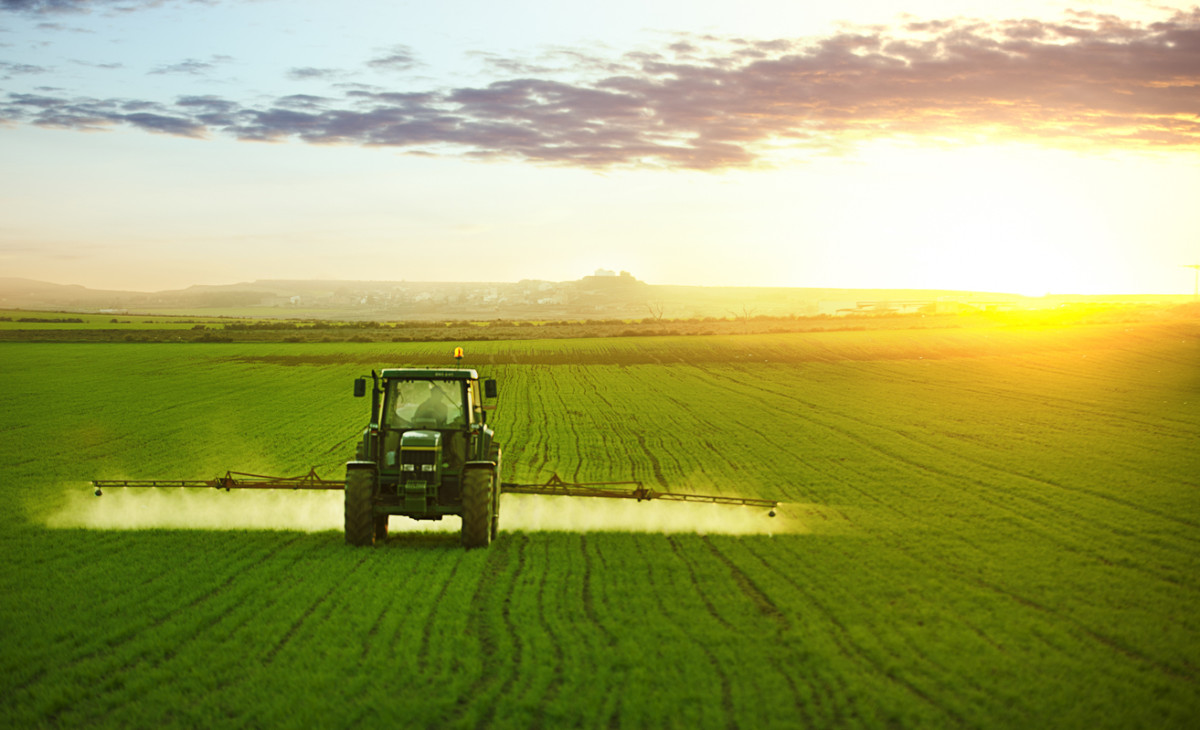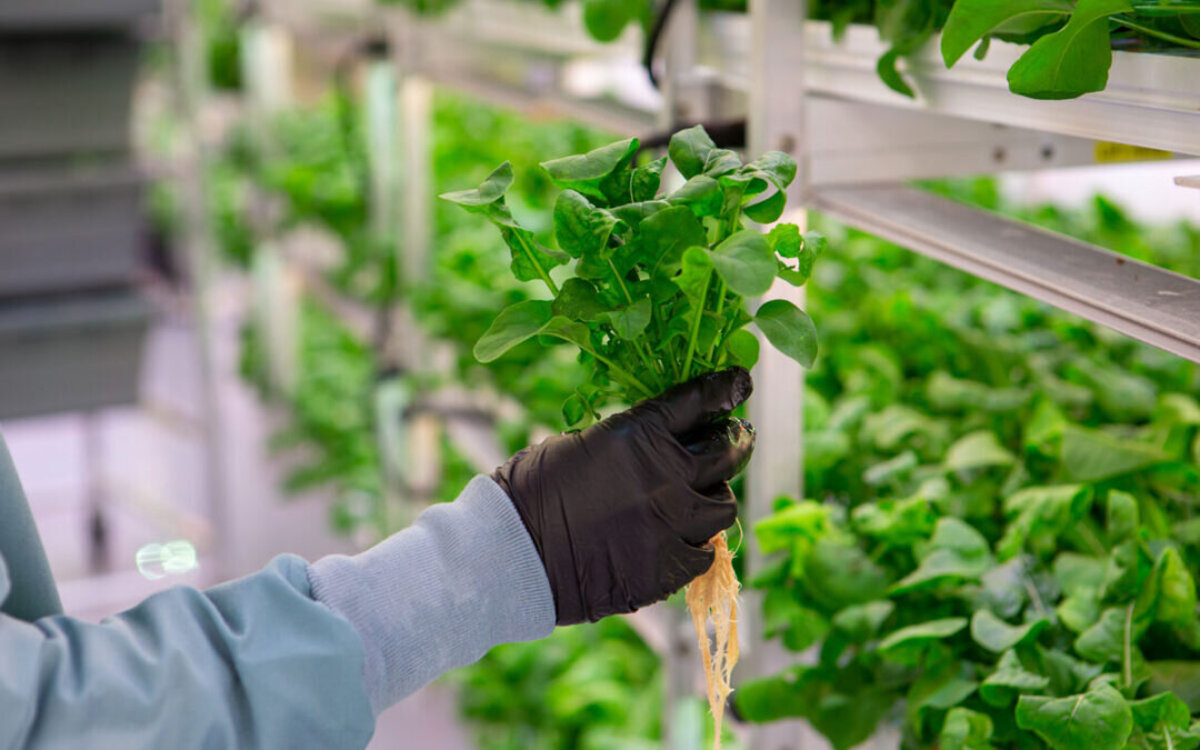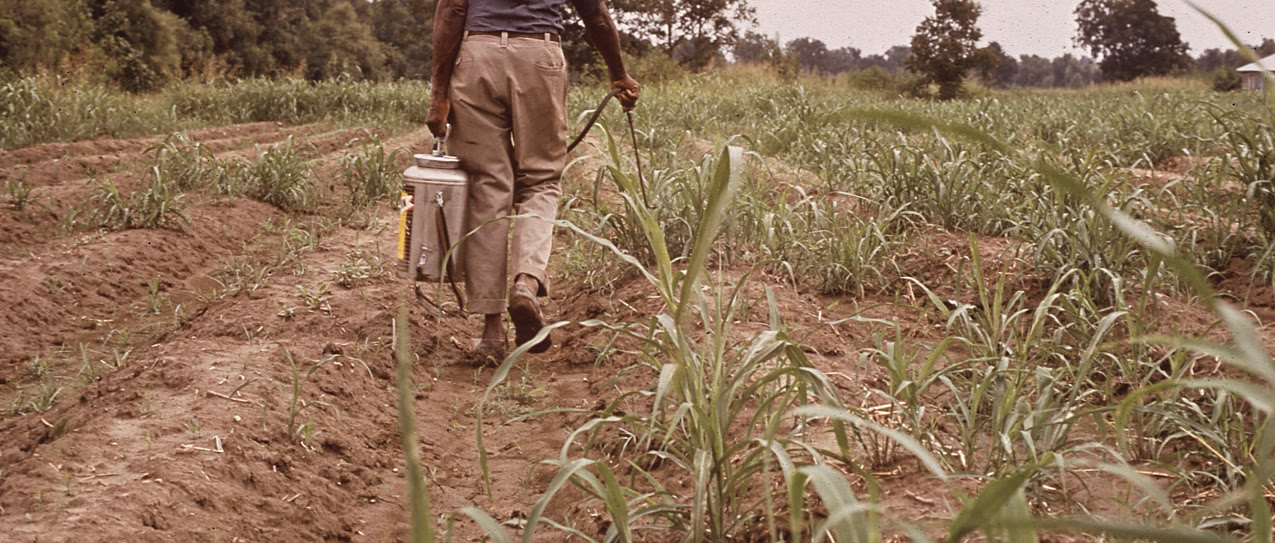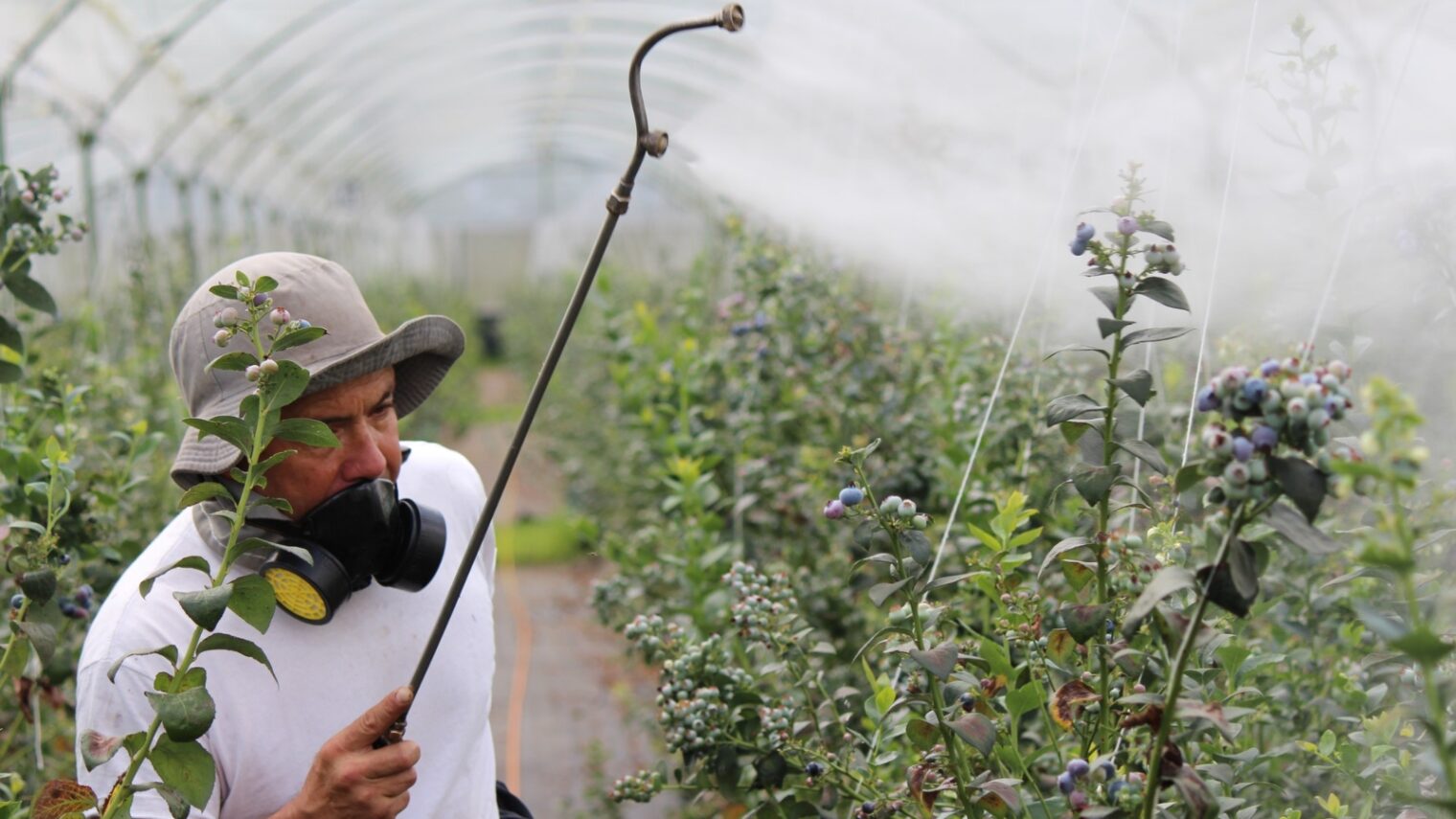Home>Gardening News and Trends>Latest News>Why Are Pesticides Used In Farming
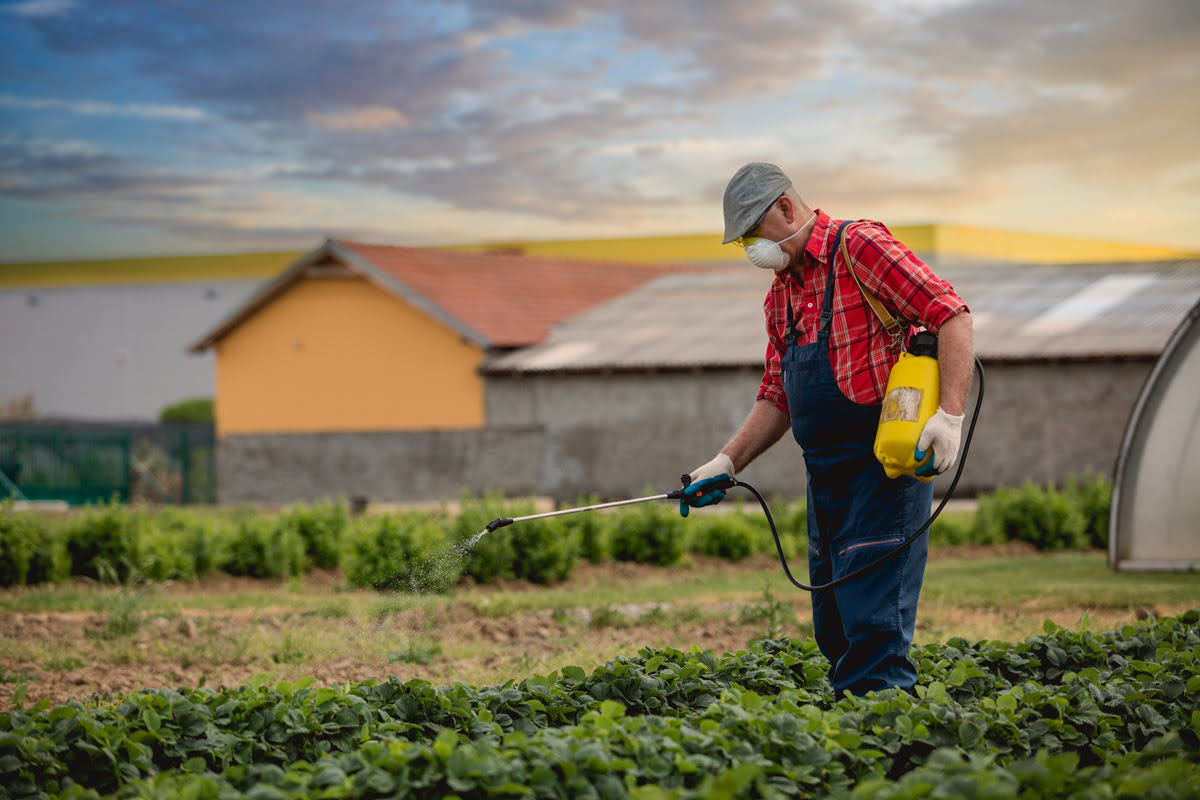

Latest News
Why Are Pesticides Used In Farming
Modified: January 22, 2024
Stay informed with the latest news on why pesticides are used in farming. Explore the impact, benefits, and concerns surrounding this vital agricultural practice.
(Many of the links in this article redirect to a specific reviewed product. Your purchase of these products through affiliate links helps to generate commission for Chicagolandgardening.com, at no extra cost. Learn more)
Table of Contents
- Introduction
- Definition of Pesticides
- Historical Background of Pesticide Use in Farming
- Types of Pesticides Used in Farming
- Reasons for Using Pesticides in Farming
- Benefits of Pesticide Use in Farming
- Concerns and Risks Associated with Pesticide Use in Farming
- Regulations and Safety Measures for Pesticide Use in Farming
- Alternative Methods to Pesticide Use in Farming
- Conclusion
Introduction
When it comes to modern farming practices, pesticides play a crucial role in ensuring crop productivity and protecting plants from pests and diseases. Pesticides are chemical substances used to control or eliminate pests, including insects, weeds, fungi, and rodents, that can cause significant damage to crops. These substances are sprayed or applied on agricultural fields to enhance yield and quality.
The use of pesticides in farming has a long history, dating back to ancient civilizations. However, with advances in technology and scientific research, pesticides have become more effective and targeted, and their usage has increased dramatically over the years. While pesticides have undeniably improved agricultural production, their use has also raised concerns about potential negative effects on human health and the environment.
In this article, we will explore the reasons why pesticides are used in farming, the benefits they provide, as well as the concerns and risks associated with their use. We will also delve into the regulations and safety measures in place to ensure responsible pesticide use and discuss alternative methods that are being adopted to reduce dependence on these chemical substances. By gaining a deeper understanding of the role pesticides play in agriculture, we can have a more informed discussion about the future of sustainable farming practices.
So, let’s dive into the world of pesticides and explore how they have become an integral part of modern farming.
Definition of Pesticides
Pesticides are chemical substances specifically designed and formulated to control, repel, or eliminate pests that can harm crops, livestock, or humans. They are used in various forms, including sprays, powders, and baits, and are applied to crops, soil, or other surfaces to prevent or reduce damage caused by pests.
These chemical compounds are classified into different categories based on their target pests and mode of action. Insecticides target insects, herbicides target weeds, fungicides target fungi, and rodenticides target rodents. There are also broad-spectrum pesticides that can target multiple types of pests.
Pesticides work by interfering with the normal physiological processes of pests. They may alter their behavior, inhibit their growth and reproduction, or disrupt their nervous systems. Some pesticides act as contact poisons, while others are systemic, meaning they are absorbed and circulated within the plant tissues.
It is important to note that not all pesticides are synthetic chemicals. Some pesticides are derived from natural sources, such as plants (botanical pesticides) or microorganisms (biopesticides). These natural pesticides are often considered to be more environmentally friendly and have less long-term adverse effects compared to their synthetic counterparts.
While pesticides can be highly effective in controlling pests and improving crop yield, their use should be carefully regulated and monitored to minimize potential risks and ensure the safety of human health and the environment.
In the following sections, we will delve deeper into the historical background of pesticide use in farming, the types of pesticides commonly used, and the reasons behind their widespread use in agricultural practices.
Historical Background of Pesticide Use in Farming
The use of pesticides in farming has a long history that can be traced back to ancient civilizations. Early agricultural practices involved the use of natural substances such as sulfur, arsenic, and smoke to control pests and protect crops. However, it wasn’t until the 20th century that the development and widespread use of synthetic pesticides transformed modern agriculture.
In the late 1800s, the discovery and synthesis of chemicals like pyrethrum and nicotine ushered in a new era of pest control. These compounds were highly effective against a wide range of pests and garnered significant attention from farmers and researchers alike.
However, it was the discovery of DDT (dichloro-diphenyl-trichloroethane) in the 1940s that marked a major breakthrough in agricultural pest management. DDT was a highly potent insecticide and became widely used during World War II to combat diseases like malaria and typhus. Its effectiveness led to its application in agricultural production, where it played a critical role in increasing crop yields and reducing losses caused by pests.
Unfortunately, the broad-scale use of DDT and other persistent pesticides had unintended consequences. They were found to have detrimental effects on the environment and human health. The toxic buildup of these chemicals in the food chain, along with their persistence in the environment, resulted in the decline of bird populations and the contamination of water sources.
In response to these ecological concerns, the environmental movement of the 1960s and 1970s brought greater awareness of the negative impacts of pesticide use. Regulatory agencies such as the Environmental Protection Agency (EPA) in the United States and the European Union’s Pesticide Residue Regulation began to impose stricter regulations on pesticide usage and promote safer alternatives.
Since then, the focus has shifted towards developing pesticides that are more targeted and have a lower environmental impact. Integrated Pest Management (IPM) strategies have gained popularity, emphasizing the use of multiple pest control methods in a balanced and sustainable manner.
Today, the historical legacy of pesticide use continues to shape modern farming practices. While the negative impacts are acknowledged, there is also a recognition of the importance of responsible pesticide use in protecting crops and ensuring food security. Balancing the need for effective pest management with environmental and health concerns remains an ongoing challenge for the agricultural industry.
Next, we will explore the different types of pesticides used in farming and the reasons behind their widespread use.
Types of Pesticides Used in Farming
Pesticides used in farming come in various forms and are specifically designed to target different types of pests. Here, we will explore the main categories of pesticides commonly used in agricultural practices.
- Insecticides: Insecticides are pesticides specifically designed to control and eliminate insects that can cause damage to crops. They target a wide range of insect pests, including aphids, beetles, caterpillars, and mites. Insecticides can be categorized based on their mode of action – contact insecticides kill insects upon direct contact, while systemic insecticides are absorbed by plants and protect them from inside. Commonly used insecticides include organophosphates, pyrethroids, and neonicotinoids.
- Herbicides: Herbicides are pesticides used to control and eradicate unwanted plants, commonly called weeds, that compete with crops for resources such as sunlight, water, and nutrients. Herbicides can be selective, targeting specific types of weeds, or non-selective, eliminating all vegetation in the area. They can be applied pre-emergence, preventing weed growth before crops emerge, or post-emergence, targeting existing weeds after crop establishment. Examples of herbicides include glyphosate, 2,4-D, and atrazine.
- Fungicides: Fungicides are pesticides formulated to prevent or control fungal diseases that can damage crops and reduce yield. They work by inhibiting the growth of fungi or killing them directly. Fungal diseases commonly controlled by fungicides include powdery mildew, botrytis, and anthracnose. Fungicides are often used in crops such as fruits, vegetables, and cereals. Copper-based compounds, triazoles, and strobilurins are some examples of fungicides.
- Rodenticides: Rodenticides are pesticides used to control rodents such as rats and mice, which can cause significant damage to crops and stored produce. They are usually formulated as baits or traps that attract and kill rodents. Rodenticides can pose a risk to non-target animals, so their use should be carefully regulated and targeted to specific pest species.
- Others: There are several other types of pesticides used in agriculture to control a range of pests. Nematicides are used to manage nematodes, microscopic worms that feed on plant roots. Molluscicides target snails and slugs, which can damage crops. Avicides are used to deter or eliminate birds that pose a threat to crops, while acaricides control mites and ticks. These specialized pesticides offer targeted solutions for specific pest problems.
It’s important to note that each type of pesticide has its own mode of action, application methods, and potential impacts. The choice of pesticide depends on the specific pest problem, the crop being grown, and considerations for environmental and human health.
Now that we have explored the types of pesticides used in farming, let’s delve into the reasons why farmers rely on these chemical substances to protect their crops.
Reasons for Using Pesticides in Farming
The use of pesticides in farming is driven by several factors and is a critical component of modern agricultural practices. Let’s explore some of the key reasons why farmers rely on pesticides to protect their crops:
- Pest Control: The primary reason for using pesticides is to control and manage pests that pose a threat to crops. Pests can include insects, weeds, fungi, and diseases that can significantly reduce crop yields. By using pesticides, farmers can effectively suppress pest populations and prevent extensive damage to their crops.
- Increased Crop Yield: Pesticides contribute to increased crop yields by protecting plants from pests and diseases. When pests are left unchecked, they can cause significant crop losses, leading to reduced productivity and economic loss for farmers. By using pesticides, farmers can ensure healthier, more productive crops and improved overall yield.
- Cost-effectiveness: In many cases, pesticides provide a cost-effective method of pest control compared to alternative strategies. Manual removal of pests or weeds can be time-consuming, labor-intensive, and costly. Pesticides offer a more efficient and cost-effective solution, especially when dealing with large agricultural areas and high pest pressures.
- Preservation of Storage and Distribution: Pesticides are not only used on crops in the field but also during storage and transportation. They help to prevent the infestation of stored grains and other agricultural products, ensuring that they remain free from pests and maintain their quality during storage and distribution. This helps to prevent post-harvest losses and ensures that only high-quality produce reaches consumers.
- Protection of Public Health: Pesticides play a vital role in protecting public health by reducing the transmission of vector-borne diseases. Insecticides, for example, help control disease-carrying mosquitoes and ticks, which can transmit diseases such as malaria, dengue fever, and Lyme disease. By preventing the spread of these diseases, pesticides contribute to the overall well-being and safety of communities.
- Global Food Security: Pesticides are critical for ensuring global food security by helping to protect crops from significant pest damage. With the world population projected to reach 9 billion by 2050, the demand for food will continue to increase. Pesticides aid in meeting this increasing demand by safeguarding crops and maintaining stable food production on a large scale.
While these reasons highlight the importance of pesticides in agriculture, it is essential to recognize the potential risks and concerns associated with their use. In the following sections, we will explore the benefits of pesticide use, as well as the concerns and risks that have prompted the development of regulations and safety measures in the agricultural industry.
Benefits of Pesticide Use in Farming
Pesticides play a crucial role in modern agriculture and offer several benefits that contribute to the success of farming practices. Let’s explore some of the key benefits of pesticide use in farming:
- Enhanced Crop Yield: One of the primary benefits of using pesticides is the improvement in crop yield. By controlling pests and diseases that can cause substantial damage to crops, pesticides help to protect the quality and quantity of harvested produce. This leads to increased agricultural productivity and helps meet the growing global demand for food.
- Reduced Losses: Pesticides help reduce losses caused by pests throughout the growing season and during storage and distribution. By preventing crop damage from insects, weeds, and fungal diseases, farmers can minimize post-harvest losses due to spoilage and improve the overall quality of harvested produce. This results in more efficient use of resources and improved economic returns for farmers.
- Improved Quality and Appearance: Pesticides contribute to the enhanced quality and appearance of crops by preventing blemishes, discoloration, and disease symptoms. This is particularly important for fruits, vegetables, and other high-value crops where aesthetic appeal and marketability are crucial. By ensuring that crops are free from visible damage, pesticides help meet the high standards of consumers and increase market value for farmers.
- Disease Prevention: Pesticides play a significant role in disease prevention, both in plants and animals. In plant agriculture, fungicides, bactericides, and other pesticides help protect crops from devastating diseases that can wipe out entire harvests. In animal farming, pesticides such as insecticides and acaricides prevent the spread of diseases carried by pests, ensuring the health and well-being of livestock.
- Efficiency and Cost-effectiveness: Pesticides offer a cost-effective solution for pest control compared to alternative methods. Manual removal of pests or weeds can be time-consuming, labor-intensive, and expensive. Pesticides allow for efficient and targeted pest management, reducing the need for extensive manual labor and minimizing overall costs. This makes them an essential tool for farmers, particularly in large-scale agricultural operations.
- Pest Resistance Management: Pesticides, when used correctly and in accordance with proper resistance management strategies, help slow down the development of pest resistance. By rotating between different classes or modes of action, farmers can reduce the likelihood of pests developing resistance to specific pesticides. This ensures the continued effectiveness of pest control measures and prolongs the useful life of the available pesticides.
While these benefits highlight the advantages of pesticide use in agriculture, it is important to consider the potential risks and concerns associated with their use, including environmental impacts and human health risks. In the next section, we will explore these concerns and the regulations and safety measures in place to address them.
Concerns and Risks Associated with Pesticide Use in Farming
While pesticides provide numerous benefits to agriculture, their use is not without concerns and potential risks. It is important to understand and address these issues to ensure the responsible and sustainable use of pesticides in farming. Here are some of the major concerns and risks associated with pesticide use:
- Environmental Impact: Pesticides can have adverse effects on the environment, including contamination of water sources, soil degradation, and harm to non-target organisms. Runoff from fields treated with pesticides can enter rivers, lakes, and groundwater, posing a risk to aquatic ecosystems. Pesticides can also harm beneficial insects, birds, and other wildlife, disrupting the delicate balance of ecosystems.
- Health Risks: Pesticides, when not used properly, can pose risks to human health. Direct exposure to pesticides or consumption of contaminated food can potentially lead to acute or chronic health effects. Agricultural workers, who are typically in close contact with pesticides, may face higher risks. Prolonged or excessive exposure to certain pesticides has been linked to respiratory problems, neurological disorders, and even certain types of cancer.
- Potential for Pesticide Residues: Residues of pesticides can persist on crops even after their application, and if not managed properly, can pose risks to consumers. Residue levels need to be carefully monitored and regulated to ensure they are within acceptable limits and do not pose health hazards. Governments and regulatory bodies have implemented strict maximum residue limits (MRLs) to ensure food safety and protect consumer health.
- Development of Pesticide Resistance: Overreliance on specific pesticides can lead to the development of resistance in target pests. Constant exposure to the same pesticide can result in the survival and reproduction of resistant individuals, leading to a reduced efficacy of pest control methods. This necessitates the need for integrated pest management (IPM) strategies that combine various approaches to minimize the development of resistance.
- Impact on Non-Target Organisms: Pesticides can harm beneficial insects, pollinators, birds, and other non-target organisms that play vital roles in ecosystem functioning. The loss of pollinators, such as bees and butterflies, can have serious implications for food production and biodiversity. It is crucial to consider the potential impacts of pesticides on non-target organisms and adopt practices that minimize their exposure.
- Volatility and Drift: Some pesticides can evaporate and become airborne, leading to drift onto neighboring fields, residential areas, and water sources. This can result in unintended exposure to pesticides by people, animals, and plants who are not the intended target. Proper application techniques and following label instructions can help minimize the risks associated with pesticide drift.
Addressing these concerns requires comprehensive risk assessment, regulatory oversight, and the adoption of sustainable and integrated pest management practices. In the next section, we will explore the regulations and safety measures implemented to ensure responsible pesticide use in farming.
Regulations and Safety Measures for Pesticide Use in Farming
To ensure the responsible and safe use of pesticides in agriculture, regulatory bodies and governments have implemented strict regulations and safety measures. These measures aim to protect human health, the environment, and promote sustainable farming practices. Here are some of the key regulations and safety measures for pesticide use in farming:
- Registration and Licensing: Pesticides must go through a rigorous registration process before they can be legally sold and used. Regulatory agencies, such as the Environmental Protection Agency (EPA) in the United States, assess the efficacy and safety of pesticides before granting registration. Similarly, pesticide applicators and farmers may be required to obtain licenses or certifications to ensure they are knowledgeable about proper handling, storage, and application techniques.
- Labeling and Instructions: Pesticide labels provide important information regarding proper use, handling, storage, and disposal of the product. They also outline safety precautions, application rates, and recommended protective equipment. Following label instructions is crucial to minimize risks associated with pesticide use. Manufacturers are required to provide clear and accurate information on labels, making it easier for farmers and applicators to use pesticides safely and effectively.
- Pesticide Residue Limits: Governments and regulatory bodies establish maximum residue limits (MRLs) that specify the allowable level of pesticide residues in food and agricultural products. Regular monitoring and testing ensure compliance with these limits, protecting consumer health and ensuring food safety. MRLs vary depending on the pesticide and the specific crop or commodity being tested.
- Integrated Pest Management (IPM): IPM is a holistic approach to pest management that combines multiple strategies and techniques to minimize the use of pesticides. It involves monitoring pest populations, using cultural practices to create unfavorable conditions for pests, implementing biological control methods, and employing targeted pesticide applications when necessary. IPM promotes sustainable farming practices that reduce reliance on pesticides and minimize environmental impact.
- Worker Safety Measures: Occupational safety guidelines have been established to protect workers involved in pesticide application and handling. These guidelines promote the use of personal protective equipment (PPE), such as gloves, masks, and coveralls, to minimize direct exposure to pesticides. Training programs and educational materials help ensure that workers are aware of the potential risks and are equipped with the necessary knowledge to handle pesticides safely.
- Environmental Protection: To protect the environment, regulators enforce laws and guidelines for pesticide application near water sources, sensitive ecosystems, and protected areas. Buffer zones may be required to minimize potential runoff and drift. Additionally, some countries have implemented pesticide disposal programs to facilitate the proper disposal of unused or expired pesticides, reducing the risk of groundwater contamination and environmental damage.
These regulations, safety measures, and best practices aim to strike a balance between the use of pesticides for effective pest management and the protection of human health and the environment. Ongoing research, monitoring, and collaboration between farmers, regulatory agencies, and the scientific community drive the continuous improvement and refinement of these measures.
Now, let’s explore some alternative methods that are being adopted to reduce dependence on pesticides in farming.
Alternative Methods to Pesticide Use in Farming
As concerns about the impacts of pesticide use on human health and the environment continue to grow, there is increasing interest in developing and adopting alternative methods to reduce dependence on pesticides in farming. These methods focus on sustainable and environmentally friendly approaches to pest management. Here are some of the alternative methods being implemented:
- Biological Control: Biological control involves the use of natural enemies to control pest populations. Beneficial insects, such as ladybugs and parasitic wasps, are introduced into the ecosystem to prey on or parasitize pests. This method reduces reliance on chemical pesticides and promotes the natural balance of pest populations.
- Cultural Practices: Cultural practices involve altering agricultural practices to create unfavorable conditions for pests. Crop rotation, intercropping, and companion planting can disrupt the life cycles of pests and reduce their populations. Additionally, maintaining healthy soils, providing proper nutrition to plants, and practicing good sanitation techniques can improve plant resistance to pests and diseases.
- Physiological Barriers: Physiological barriers, such as sticky traps, insect-proof nets, and row covers, can physically prevent pests from reaching crops. These barriers create a physical barrier between pests and plants, reducing the need for chemical pesticides. They are particularly effective for protecting high-value crops and can be used in combination with other pest management strategies.
- Genetic Resistance: Breeding crops for genetic resistance to pests and diseases is an effective long-term strategy to reduce the need for chemical pesticides. Plant breeders develop crop varieties that possess natural resistance to specific pests or diseases, minimizing the risk of damage and allowing farmers to rely less on chemical interventions.
- Trap Crops and Pheromones: Trap crops involve planting specific crops that attract pests away from the main crop, reducing damage to the primary crop. Pheromones, on the other hand, are chemical signals that can disrupt the mating behavior of insects, reducing their populations. These methods can be effective in managing specific pests and can be integrated into overall pest control strategies.
- Plant Extracts and Biopesticides: Natural plant extracts and microbial-based products, known as biopesticides, are being developed as alternatives to synthetic chemical pesticides. These products use naturally occurring compounds or microorganisms to control pests and diseases. They are often considered to have lower environmental impacts and fewer risks to human health, making them suitable options for organic farming and sustainable pest management.
While these alternative methods offer promising solutions, it’s important to note that they may not completely replace the use of pesticides in all situations. Integrated approaches that combine different strategies, including targeted pesticide applications, may be necessary for effective pest management.
As research and innovation continue, the adoption of alternative methods will likely increase, reducing the overall reliance on chemical pesticides and promoting more sustainable farming practices.
Now, let’s conclude our exploration of pesticides in farming.
Conclusion
The use of pesticides in farming has become an integral part of modern agricultural practices, providing essential benefits such as pest control, increased crop yields, and food security. However, it is crucial to recognize and address the concerns and risks associated with their use, including potential environmental impacts and health risks.
Regulatory bodies and governments have implemented strict regulations and safety measures to ensure the responsible use of pesticides. This includes thorough registration processes, labeling requirements, and monitoring of pesticide residue levels in food. Integrated Pest Management (IPM) strategies promote sustainable approaches to pest management, combining multiple strategies and reducing reliance on pesticides.
Alternative methods to pesticide use, such as biological control, cultural practices, and genetic resistance, are gaining momentum as sustainable alternatives. These methods aim to reduce dependence on chemical pesticides and minimize environmental impacts. Furthermore, the development of plant extracts and biopesticides provides promising options for organic farming and sustainable pest management.
The future of farming lies in striking a balance between effective pest management and protecting human health and the environment. Continued research, innovation, and collaboration between farmers, regulatory agencies, and the scientific community will drive the development and adoption of safer and more sustainable pest control practices.
By understanding the role of pesticides in farming and exploring alternative methods, we can work towards a more sustainable and responsible agricultural system that ensures the availability of safe and high-quality food for generations to come.

